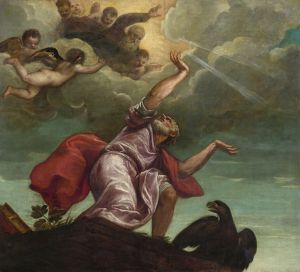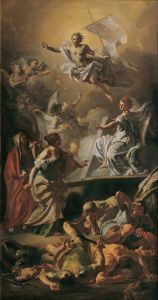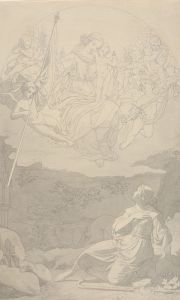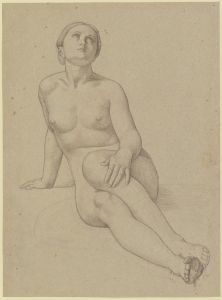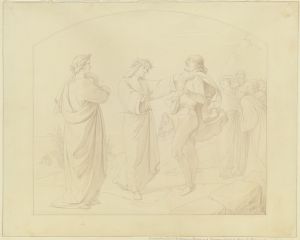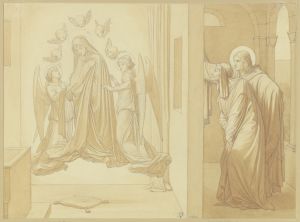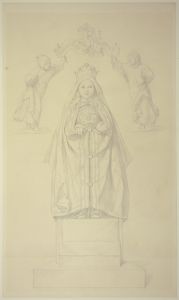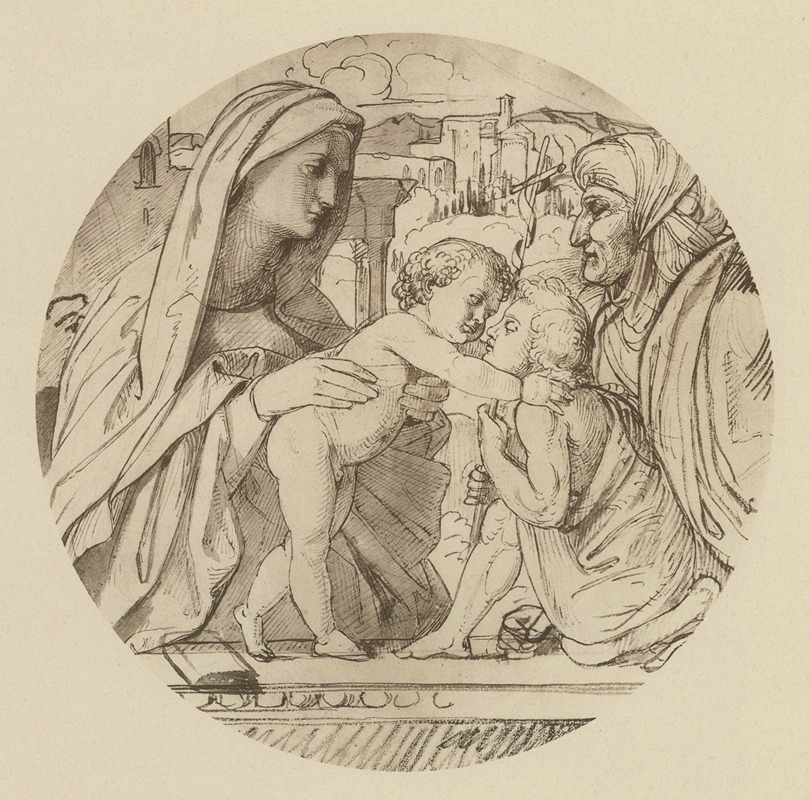
Madonna mit dem Kinde, der heil. Elisabeth und dem heil. Johannes
A hand-painted replica of Eduard von Steinle’s masterpiece Madonna mit dem Kinde, der heil. Elisabeth und dem heil. Johannes, meticulously crafted by professional artists to capture the true essence of the original. Each piece is created with museum-quality canvas and rare mineral pigments, carefully painted by experienced artists with delicate brushstrokes and rich, layered colors to perfectly recreate the texture of the original artwork. Unlike machine-printed reproductions, this hand-painted version brings the painting to life, infused with the artist’s emotions and skill in every stroke. Whether for personal collection or home decoration, it instantly elevates the artistic atmosphere of any space.
Eduard von Steinle was a prominent 19th-century German painter associated with the Nazarene movement, which sought to revive honesty and spirituality in Christian art. One of his notable works is "Madonna mit dem Kinde, der heil. Elisabeth und dem heil. Johannes," which translates to "Madonna with the Child, St. Elizabeth, and St. John." This painting reflects Steinle's dedication to religious themes and his commitment to the stylistic and thematic principles of the Nazarene movement.
The Nazarene movement, which began in the early 19th century, was characterized by its focus on religious subjects, inspired by the art of the Middle Ages and the early Renaissance. Artists of this movement aimed to restore what they saw as the purity and spirituality of earlier Christian art, often drawing inspiration from the works of Raphael and other Renaissance masters. Steinle, as a member of this movement, often depicted biblical scenes and figures with a sense of reverence and devotion.
In "Madonna mit dem Kinde, der heil. Elisabeth und dem heil. Johannes," Steinle presents a serene and intimate portrayal of the Virgin Mary with the Christ Child, accompanied by St. Elizabeth and St. John the Baptist. The composition likely reflects the influence of traditional Christian iconography, which frequently depicted these figures together due to their familial and spiritual connections. St. Elizabeth, the mother of St. John the Baptist, is often shown in scenes with the Virgin Mary, emphasizing the bond between their sons, Jesus and John.
Steinle's work is characterized by its meticulous attention to detail and its harmonious composition. The figures in the painting are rendered with a gentle realism, capturing both their physical presence and their spiritual significance. The use of light and color in the painting enhances the sense of divine presence, a hallmark of Steinle's style. His ability to convey emotion and spirituality through his art is evident in the tender expressions and gestures of the figures.
The painting reflects Steinle's deep religious conviction and his commitment to the ideals of the Nazarene movement. His works often served as visual sermons, intended to inspire and uplift viewers through their depiction of sacred themes. Steinle's art was not only a reflection of his personal faith but also a response to the broader cultural and religious currents of his time.
Eduard von Steinle's contributions to religious art were significant, and his works continue to be appreciated for their spiritual depth and artistic excellence. "Madonna mit dem Kinde, der heil. Elisabeth und dem heil. Johannes" exemplifies his ability to blend traditional iconography with a personal and heartfelt interpretation of religious subjects. Through his art, Steinle sought to convey the timeless truths of Christianity, inviting viewers to contemplate the divine mysteries depicted in his paintings.







